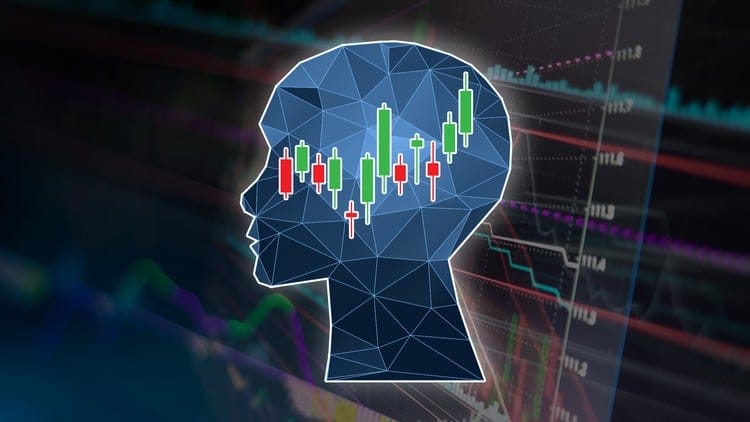Introduction: The Mirage of Easy Forex Profits
Forex trading is often painted as a golden road to financial freedom. And while there’s potential to make good money, it’s also a breeding ground for scams and misinformation. One of the biggest traps? Unverified forex signals.
You’ve probably seen those messages:
“+300 Pips today. Join my VIP group now!”
“Buy EUR/USD now, 99% accurate signals!”

Sound familiar?
They look tempting, especially if you’re new or struggling. But here’s the harsh truth: blindly trusting unverified forex signals is a fast track to blowing your account—and possibly your confidence too.
Let’s break it all down.
What Are Forex Signals Anyway?
Forex signals are trade recommendations or ideas. They tell you when to enter or exit trades, including:
-
Currency pair (e.g., GBP/USD)
-
Direction (buy/sell)
-
Entry point
-
Stop loss
-
Take profit
These signals can come from expert traders, algorithms, or trading communities. Some are genuinely helpful. But the unverified ones? They’re ticking time bombs.
The Dark Side of the Signal Industry
There’s a reason this article has a negative tone—it’s justified.
The forex signal industry has turned into a money-grabbing circus. People who barely understand the market are offering “premium” signals. They flaunt rented Lamborghinis and fake MetaTrader screenshots to appear legit.
The result? Thousands of traders are being misled every day.
And if you’re thinking, “But they have lots of followers,” remember this:
Popularity ≠ credibility.
False Profits: How Unverified Signals Manipulate Results
Ever noticed how most signal sellers never show losses?
Here’s how they trick you:
-
Cherry-Picked Results: Only the winning trades are showcased.
-
Edited Screenshots: MT4/MT5 screenshots can be faked within seconds.
-
No Verified Track Record: No Myfxbook or FxBlue link? Big red flag.
In short, they sell the dream but hide the reality. And that’s dangerous for your wallet.
Who’s Behind These Signals? Often, It’s Not Who You Think
You might think it’s a trading guru or someone with insider knowledge. But in reality?
-
It could be a teenager with zero trading history.
-
It might be an AI copying someone else’s signals.
-
It could be a marketing scam exploiting psychological triggers.
There’s zero transparency. And when there’s no face, no accountability follows.
You’re Paying to Lose: The Subscription Trap
Most unverified signal providers offer “premium” packages. The structure goes like this:
-
$30/month for basic
-
$99/month for VIP
-
$500 for lifetime access (with zero refund policy)
What are you really paying for?
Probably low-quality, random guesses, not professional analysis. And once you lose money, good luck asking for your money back—they’ll either block you or blame “market volatility.”
The Psychological Toll: Trusting the Wrong Source Hurts
Forex trading is emotional. Add the pressure of blindly following a signal and losing your money?
That messes with your head.
-
You question your own ability.
-
You panic.
-
You revenge trade to make back the loss.
-
You spiral deeper into losses.
And here’s the kicker—you lose confidence in trading altogether, just because you trusted the wrong source.
The Dangers Go Beyond Just Losing Money
When you follow unverified forex signals, you’re not just risking your capital. You’re:
-
Destroying your learning curve: You’re not analyzing charts or making your own decisions.
-
Falling into dependency: You wait like a robot for signals, instead of becoming a self-sufficient trader.
-
Risking data exposure: Many groups ask for personal details and trading credentials.
It’s like driving blindfolded on a highway—you might survive a few miles, but eventually, you’ll crash.
The No-Strategy Strategy: A Common Red Flag
Ask a signal provider one simple question:
“What’s your trading strategy?”
If they dodge the answer or throw buzzwords like “smart money,” “market manipulation,” or “institutional order flow” without explanation, run the other way.
A legit signal provider should explain their reasoning. Without strategy, you’re essentially flipping a coin.
Why Verified Signals Are Different
Now, not all signals are bad. There are legit ones. But here’s how to spot the real deal:
-
Backtested strategies with statistics
-
Myfxbook/FxBlue verified results
-
Transparent win/loss ratio
-
Real-time risk management
-
Educational support, not just calls
If it’s not verified, it’s not worth your money. Period.
Red Flags to Watch Out For
Let’s make this easy. Here are clear signs you’re dealing with a scam or unverified forex signal provider:
-
No verified performance data
-
Constant flashy lifestyle marketing
-
Overpromising results (“95% win rate”)
-
No real interaction or education
-
No trading history
-
Blaming you when trades fail
See one of these? Get out. See three? RUN.
The FOMO Factor: Why Many Fall for It
We’re human. We want fast results, and we hate missing out.
So when you see someone post a big win with “Last call hit TP5,” you panic and think, “I need to join now or I’ll miss out!”
But guess what? That’s exactly what they want.
It’s emotional marketing. Not smart trading.
Don’t fall for it.
How to Protect Yourself in This Signal-Driven World
Want to avoid the trap? Do this instead:
-
Learn the basics: Study charts, candles, and indicators.
-
Use demo accounts: Practice before using real money.
-
Ask for proof: Always demand a verified track record.
-
Trust your own analysis: Even if you’re wrong, you’ll learn.
-
Follow regulated mentors or educators, not Instagram traders.
Forex is hard, but you’re not stupid.
You just need the right guidance—not shortcuts from shady signal vendors.
Why Learning to Trade Beats Following Signals
When you learn trading yourself, something magical happens:
-
You understand the market moves.
-
You know when to sit out.
-
You trust your own decisions.
-
You grow stronger with every loss and win.

It’s like learning to ride a bike versus getting a ride—you may fall a few times, but soon, you’re unstoppable.
And once you become a self-sufficient trader?
You’ll never need a signal again.
Conclusion: Don’t Buy Hope from Strangers
Unverified forex signals are nothing but shiny traps. They promise the world, charge you for air, and disappear when reality kicks in.
Yes, forex is tough. But trusting strangers with your money, mindset, and decisions? That’s tougher to recover from.
Be smarter. Be skeptical. Be self-reliant.
You don’t need miracle signals.
You need strategy, patience, and the guts to do it your way.
FAQs: Quick Answers to Common Questions
1. What’s the difference between verified and unverified forex signals?
Verified signals have a track record proven by platforms like Myfxbook or FxBlue. Unverified ones show no proof and often rely on marketing hype.
2. Can I make money using forex signals?
Yes, but only if they come from a reliable, transparent source. Most unverified signals lead to losses, not profits.
3. Why do so many traders fall for signal scams?
It’s the emotional pull—people want quick wins. Scammers exploit fear, greed, and FOMO to reel in victims.
4. What should I do if I’ve already lost money to bad signals?
Stop following them immediately. Reflect on what went wrong, start learning real trading, and test everything before going live again.
5. How do I find a good signal provider?
Look for real reviews, verified accounts, transparent strategies, and a willingness to educate—not just sell.


